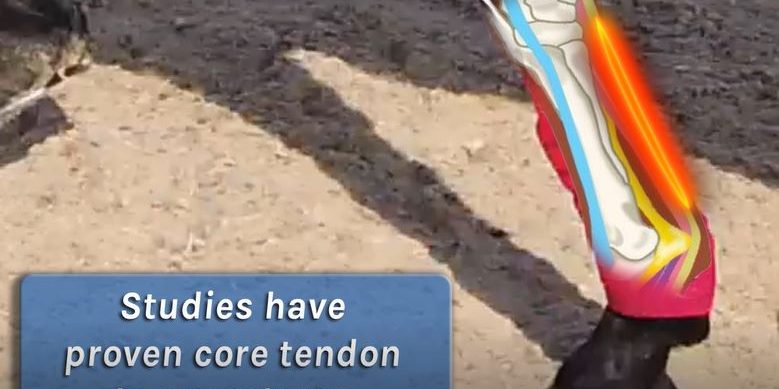What Effects Are Your Horse’s Boots Having?

Many horse riders opt to use exercise boots for their horses. Exercise boots are often used to protect the horse’s tendons and ligaments from impacts and strikes, especially during jumping or fast work. Even when being ridden on the flat, some horses can pick up brushing or overreach injuries, so exercise boots can be a useful protective tool. However, boots and bandages can also have the undesirable and potentially damaging effect of causing heat to build up in the lower leg. This article outlines how this happens and what can be done to achieve a better balance of strike protection and cooling.
The Heating Effect of Exercise Boots and Bandages
Scientific studies* show that when the core tendon temperature goes above 42.5°C, degeneration of the tendon cells can occur.
Skin temperatures are thought to be 5-6 degrees lower than the core of the tendon. This could mean that the skin temperature only has to rise to 37 °C for the core temperatures to be within this damaging range. Wearing boots and bandages is proven to insulate the legs. In our tests, skin temperatures inside the boots reached 38°C. This may mean that the leg is reaching core temperatures of over 43°C.
It is easy to see how using boots or bandages during exercise could lead to your horse’s legs overheating, leaving them more prone to injury and damage. Excessive heat can also prolong recovery time, meaning the horse’s legs cannot fully recover between training sessions.
Of course, this does not mean that no horse should ever use exercise boots. Exercise boots have a very important part to play in protecting horses’ legs during exercise, and it is often better to use exercise boots than to not use them. However, we as riders must understand the negative consequences of excessive heat build up in the leg, and take steps to reduce it.
Minimise Heat Build Up During Exercise with Exoskeleton Exercise Boots
The Exoskeleton exercise boot by Cryochaps is designed with protection and cooling in mind. Our exercise boots are designed to provide ultimate impact and strike protection to the most vulnerable areas of the lower leg, whilst minimising heat build up. The innovative Exoskeleton is comprised of an outer shell, which is shaped to allow air to be drawn across the back of the leg as the horse moves.
Cool Your Horse’s Legs Effectively After Exercise with Cryochaps Ice Boots
Applying ice cold Cryochaps is a great way to reduce internal temperatures as quickly as possible after riding. The Cryochaps ice boot for horses is available in two different designs: the K2F ice boot for knee-to-fetlock coverage, and the Absolute Wrap, a handy ice wrap for knees, hocks and any knocks or injuries.
You can purchase the Cryochaps K2F ice boots for horses, Absolute Wrap equine ice wraps and the Exoskeleton exercise boots for horses via our website today.
*Birch et Al 1997
